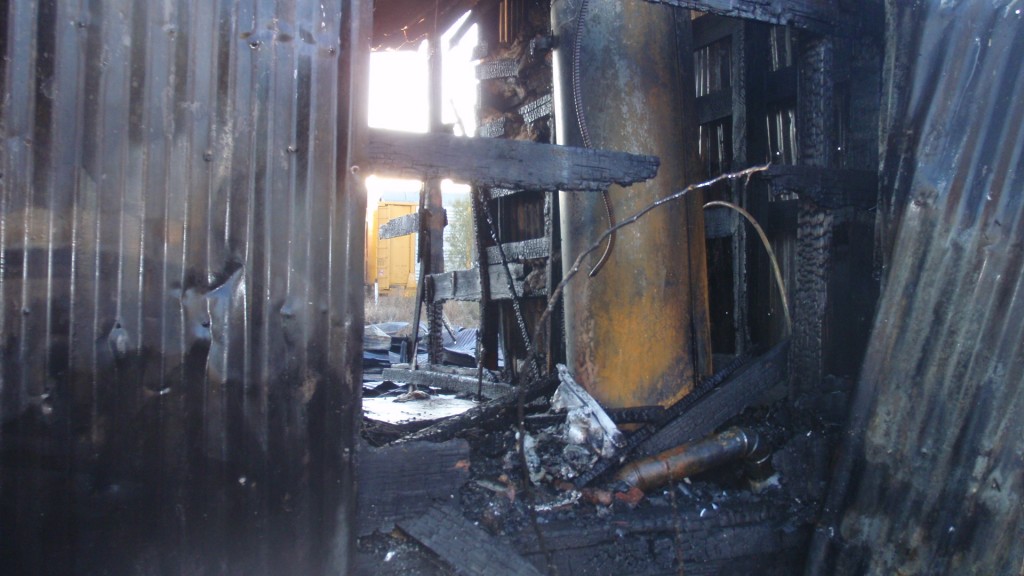
Life and Death in a New Orleans Squat
Eight young people hurtling toward a fate that they didn’t want to consider or to control died in a fire in an abandoned warehouse in New Orleans’ 9th Ward on December 28, 2010. How did they end up in that place on that night? What forces drew them to ride the rails, and to live on the streets, and what did they leave behind? Two weeks after the fire I journeyed to New Orleans to find answers, detailed in The Boston Review story titled “A World on Fire: Life and Death in a New Orleans Squat.” I also found a larger story.
Generations of Americans have projected their hopes, dreams and fantasies onto the vast spaces best seen from the open door of a boxcar. Trains charging across the plains and through ruined factory towns serve as an escape from the monotony of everyday life, the responsibilities that one can no longer meet, and the regrets one cannot face. Yet the spaces between the miles-long strands of freight cars hide a multitude of secrets. The railroads have a reality of their own, a world of danger, violence, gangs, crime and terrorism. Most of the eight who died in the squat fire knew this world well, and chose it anyway. The rest of us know very little about about the secret life of the rails.
An Inconvenient Barn
On the far edge of real estate-mad San Francisco stands a structure that is a throwback to the city’s history, yet right in the middle of a huge new housing development. The clash between the developer and the irascible owner of the Barn took two years of negotiations. The story shows how they came to and an only-in-San Francisco solution.

A World On Fire

In December 2010 eight young train-hopping travelers died in a squat fire in a derelict part of New Orleans. They had lived life that embraced danger as the thing made them feel alive: begging for spare change, diving in dumpsters for food, sleeping anywhere they could throw down their sleeping bags. My daughter had dropped out of college halfway through her freshman year to hop trains. When she returned 18 months later she said I would never understand why she did what she did. When these eight kids died I wanted to understand them as a way of understanding her. Two weeks after the fire I went to New Orleans to report this story, published in Boston Review, was a finalist for the PEN/USA literary non-fiction award
War of Values
Between 2005 and 2008, an epic battle raged in San Francisco over who could afford to live here. My 8000-word investigative piece described how the city’s dominant landlords, the Lembi family of CitiApartments fame, bought up every building they could get their hands on, from the Tenderloin’s rattiest dumps to Nob Hill’s ritziest penthouses, with an audacious plan to drive up everyone’s rent. And their money came from the same financial geniuses who brought the world economy to its knees. The story was a finalist for the American Society of Magazine Editors Public Affairs award..
Out On The Edge
Kwame Harris, former 49ers defensive lineman, found that his life as a gay man inside the NFL was not as much of a secret as he had been led to believe it would be. The world of the locker room, and particularly the intense synchronicity of the defensive line, requires an intense intimacy for the line to work effectively. The pressure of wondering if his teammates knew his secret and what they felt about it was the real cost of remaining in the closet. I was privileged to work with Kwame Harris very closely on this story for ESPN magazine.

Alternative Ending
Every major city used to have a scrappy, independent weekly newspaper that took glee at poking its thumb in the eye of that city’s establishment, and The San Francisco Bay Guardian was one of the first. Founded by Bruce Brugmann in 1966, the paper had its ups and downs financially, but it kept rolling along until the twin blows of the digital age and the 2008 recession sucker punched its revenue stream. In this 2012 piece for The Columbia Journalism Review, I mourned the passing of The Guardian and its pugnacious editor who, for nearly 50 years, took great glee in harassing the city fathers, blocking greedy developers and agitating for open records laws so city business would not be conducted in secret. Brugmann was unrepentant even as he was closing up shop, saying , “As long as you’re fighting, you haven’t lost.

The New Face of Politics
The U.S. lags behind the world when electing women to office. Is that about to change?
This story in AARP magazine encouraged women to consider running for office as a capstone to their careers. It was shocking to discover that the United States ranks 73rd in the 186 democracies when it comes to women’s participation in elected office, worse than Turkmenistan and slightly better than the tiny republic of San Marino.
Wendy Rogers was one of four women I featured in the article, which was published in AARP September/October issue.

Mrs. Governor To The Rescue
First she saved Jerry Brown from growing old alone. Then she used her insider knowledge to outfox Meg Whitman. Now Anne Gust Brown’s job is to help bring California back from the brink. My profile of her showed how her inside knowledge of Brown’s opponent, gained when they both worked at Gap, Inc, Anne as COO and Meg on the board of directors, helped Brown devise a precise and disciplined strategy to defeat his considerably better-funded opponent. This was published in time for Brown’s inaugural January 2011.